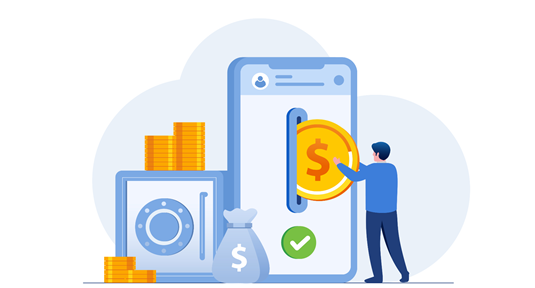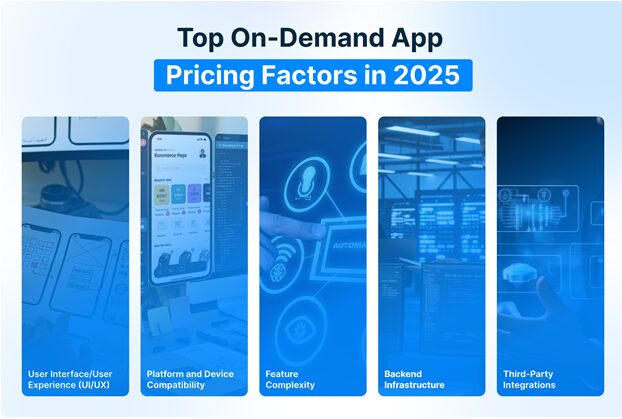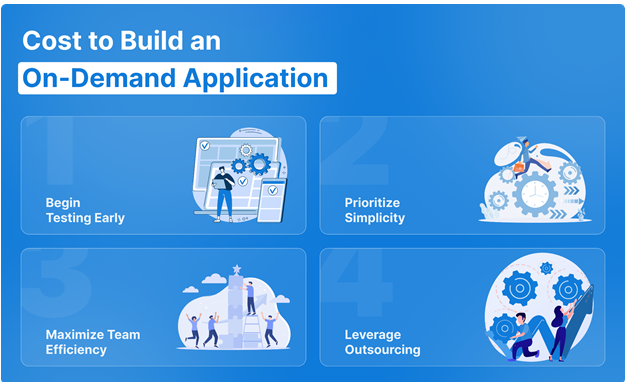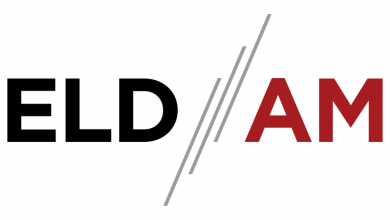How Much Does It Cost to Create an On-Demand Mobile App?

Businesses today are moving fast – and so are their customers. Whether it’s food, groceries, a ride, or even home services, people want things delivered quickly and easily. That’s why on-demand mobile apps have become such a powerful tool for companies looking to grow and stay competitive.
If you’re a business owner or decision-maker thinking about building your own on-demand app, one of the first questions you’ll ask is: How much will it cost?
The truth is, there’s no fixed answer.
The total cost depends on many things – what features you need, how complex the app is, who’s building it, and even where the development team is located.
In this article, we’ll break it all down in simple terms. You’ll learn what really goes into the cost to build an on-demand app, top factors that affect pricing, how costs vary by various stages, and smart ways to reduce your overall budget without compromising on quality.
Top On-Demand App Pricing Factors in 2025
On-demand mobile apps are digital platforms that seamlessly connect customers with service providers, acting as intermediaries to simplify the process of discovering, requesting, and receiving services. When planning to build an on-demand service app, it’s essential to evaluate the key factors that can significantly influence your budget for on-demand app development.
These elements go beyond basic coding and reflect the technical depth, scalability, and user experience expectations of modern apps in 2025:
1. User Interface/User Experience (UI/UX): A compelling and intuitive UI/UX design is crucial for attracting and retaining users. However, high-end visual designs, custom animations, and user-centric navigation can substantially increase design and development costs.
2. Platform and Device Compatibility: Developing your app for multiple platforms such as iOS, Android, and web – requires additional resources. Cross-platform compatibility, while broadening your market reach, can raise development costs due to added testing and optimization requirements.
3. Feature Complexity: The more sophisticated your app’s features such as GPS-based real-time tracking, live chat, push notifications, and review systems the more development time and cost are involved. Feature-heavy apps typically demand more backend logic and frontend integration.
4. Third-Party Integrations: Connecting your app with external services like payment gateways (Stripe, PayPal), social media logins, or analytics tools can improve functionality but also add setup and subscription costs. Some integrations may require additional security and compliance protocols.
5. Backend Infrastructure: Robust backend systems are vital for real-time data handling, user management, and secure storage. Choosing between cloud-based and dedicated servers also influences scalability and long-term operational costs.
These on-demand app pricing factors must be considered early in the planning stage to avoid budget overruns and ensure a successful launch. Beyond knowing what drives costs, it’s equally important to break down each core development stage – as every phase plays a key role in shaping the overall budget.
Cost to Build an On-Demand Application
Building an on-demand app involves various development stages, each with unique features and costs. Understanding these early helps in effective planning, avoiding surprises, and ensuring a smooth launch. Studies show that app development projects exceed budgets due to poor planning and scope creep, highlighting the importance of clear scope definition and strategic execution from the start.
During on-demand app cost estimation, prices vary widely based on app complexity and development choices:
● Basic apps with essential features like search, scheduling, and simple navigation typically range from $10,000 to $40,000.
● Moderately complex apps, which may include user profiles, real-time tracking, and in-app messaging, generally fall between $12,000 and $50,000.
● Advanced apps that incorporate AI integration, custom backend systems, or multi-platform deployment often exceed $100,000, depending on unique business requirements.
Below is an on-demand app development cost breakdown by functional stage, varying by complexity and technology:
1. Cart & Order Review
This stage involves building features that let users view, manage, and review items in their cart before purchasing. It focuses on a smooth checkout experience and typically costs around $2,000 to implement basic functionalities effectively.
2. Order Tracking & History
Order tracking allows users to monitor the status of their current orders in real time and view their order history for reordering or reviewing past purchases. This feature generally costs about $2,000 and is vital for user engagement.
3. Settings
Settings features include the development of account management tools like user profiles, security configurations, and payment method integrations. These elements enhance personalization and safety and are typically built for around $2,000 in development costs.
4. Profile
This feature enables service providers to register, create, and update their profiles using email or social media, and manage preferences. Costing about $2,000, it’s essential for establishing trust and professionalism on the platform.
5. Marketplace
Developing a service provider marketplace includes building functionalities to post services, find work, and engage with consumers. With more complex requirements, this component typically costs around $4,000 and is central to an on-demand app’s ecosystem.
6. Orders Management
This stage includes tools for service providers to manage current and past orders, enabling them to track, update, or cancel tasks. At an estimated $3,000, it ensures operational efficiency and a better user experience.
7. Chat Module
The chat module involves adding communication features like real-time messaging, group chats, and media sharing. It promotes seamless interaction between users and providers, typically costing around $1,500 to implement a basic version.
8. Web Dashboard
A web dashboard allows administrators to oversee platform activity, user behavior, and issue resolution. It supports efficient operations and insights and generally costs about $4,000 to develop a well-functioning and intuitive interface.
By understanding the on-demand app development cost involved at each development stage, businesses can strategically allocate their budgets and focus on essential features that drive value and user satisfaction. Additionally, it’s crucial to explore effective strategies for reducing development expenses without sacrificing the quality and performance of the on-demand application.
How to Reduce the Cost to Build an On-Demand Application Without Compromising Quality?
As businesses invest in building on-demand applications, balancing cost-efficiency with product quality becomes a strategic priority. Without the right approach, development expenses can escalate quickly. The key is to implement smart, scalable practices that reduce costs, maintain performance and usability, and ultimately accelerate business growth. Let’s learn more about how to achieve this effectively:
- Begin Testing Early: Starting quality assurance early in the development cycle helps businesses catch bugs and technical issues before they escalate. This proactive approach reduces rework, shortens timelines, and significantly cuts costs associated with post-launch fixes or delays.
- Prioritize Simplicity: Focusing on must-have features and a clean, intuitive design ensures faster development and a better user experience. For businesses, this means lower upfront investment, easier iterations, and a quicker path to market validation without overengineering the product.
- Maximize Team Efficiency: Assign responsibilities based on team members’ core strengths and technical expertise. Efficient team structuring improves output quality, shortens development cycles, and helps reduce staffing overhead – especially critical for businesses managing multiple stakeholders and timelines.
- Leverage Outsourcing: Working with reliable outsourcing partners enables access to skilled professionals at a fraction of the in-house cost. Businesses can scale faster, reduce fixed expenses, and maintain product quality by tapping into global talent with domain-specific expertise.
Understanding how to reduce costs without sacrificing quality is just one part of the equation. Now, let’s bring it all together and reflect on how strategic planning, smart execution, and the right partnerships can drive long-term success for your on-demand mobile app.
Conclusion
Building a successful on-demand mobile app goes beyond just coding – it requires a clear understanding of costs, priorities, and strategic execution. For businesses aiming to optimize investment without compromising quality, partnering with the right development team is essential.
Set your budget for on-demand app development with DevStory, which specializes in delivering tailored on-demand app solutions that balance innovation, scalability, and cost efficiency. From ideation through launch, their expertise ensures your app meets market demands while controlling budgets effectively.
Ready to develop a high-impact, cost-conscious on-demand app? Collaborate with DevStory and turn your business goals into a scalable digital solution.

Source: How Much Does It Cost to Create an On-Demand Mobile App?





